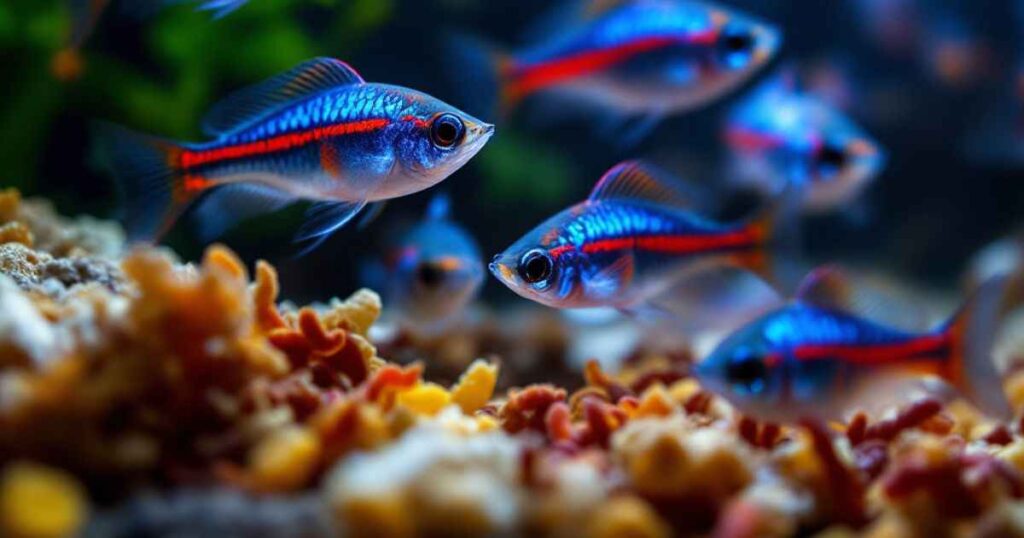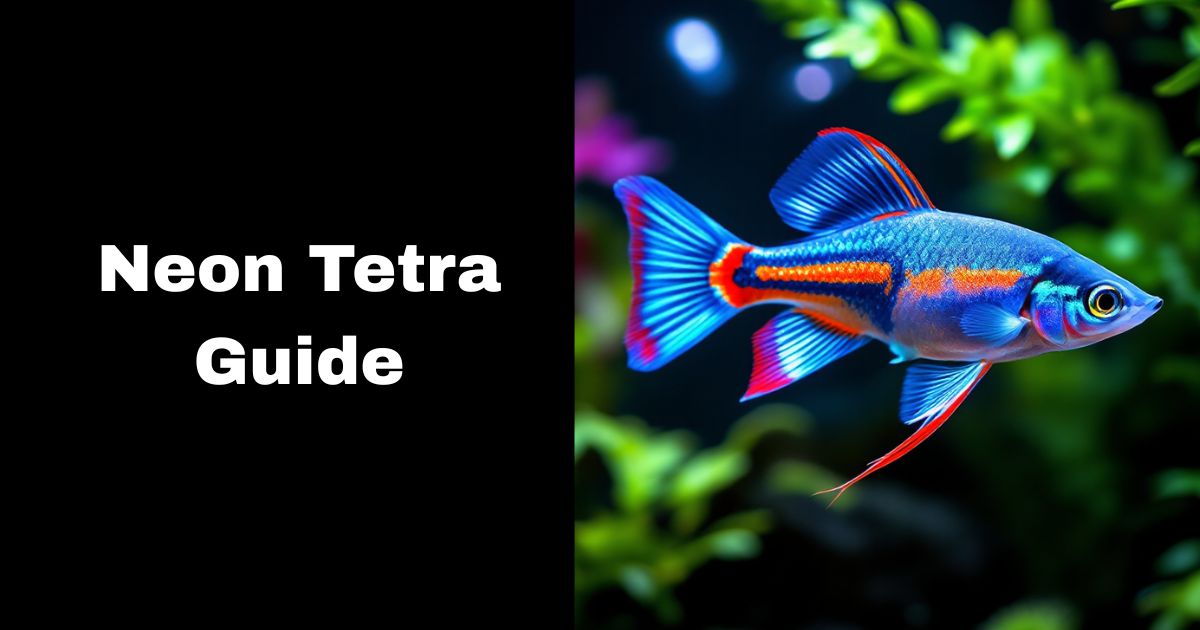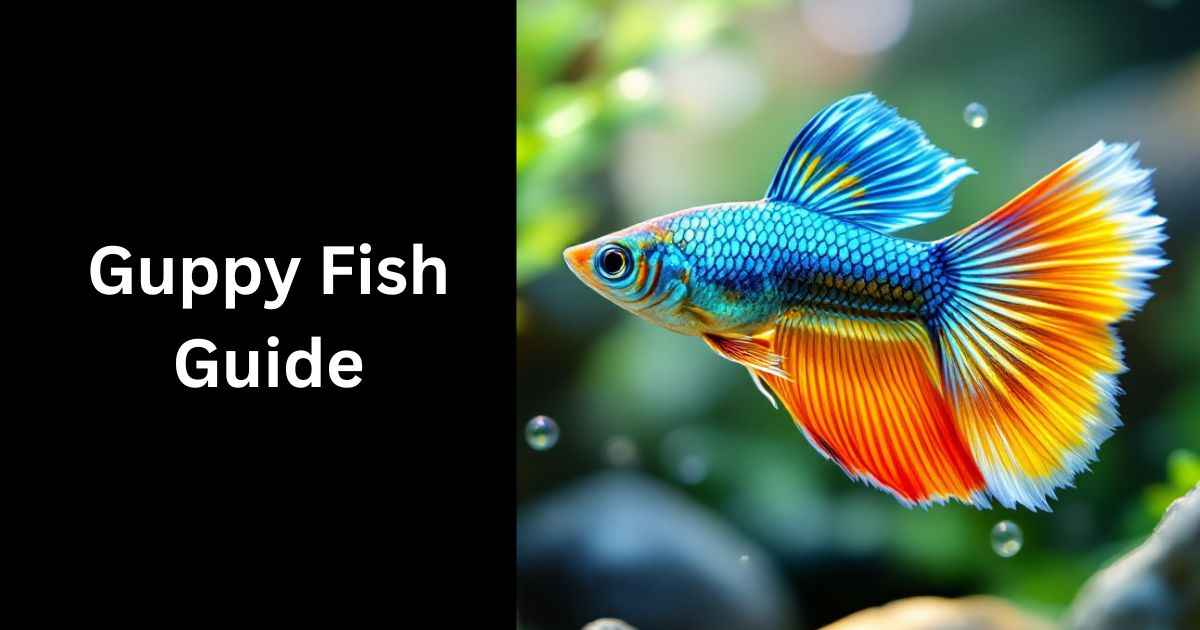Neon Tetras are one of the most popular freshwater fish in the aquarium hobby, and it’s easy to see why. With their vibrant colors, peaceful nature, and relatively simple care requirements, these tiny fish have captured the hearts of aquarists worldwide. Whether you’re a beginner looking to start your first tank or an experienced hobbyist wanting to add a splash of color to your aquarium, Neon Tetras are a fantastic choice.
In this article, we’ll dive deep into everything you need to know about Neon Tetra care. From their ideal tank setup and diet to their size, behavior, and even breeding tips, we’ve got you covered. By the end, you’ll have all the knowledge you need to create a thriving environment for these beautiful fish.
What Are Neon Tetras?

Neon Tetras (Paracheirodon innesi) are small, freshwater fish native to the Amazon Basin in South America. Found in slow-moving rivers and streams, these fish thrive in soft, acidic water surrounded by dense vegetation. Their natural habitat is shaded by overhanging trees, which creates a dimly lit environment perfect for their shimmering, iridescent colors to stand out.
These fish are best known for their striking appearance. They have a bright blue stripe running from their nose to their tail, paired with a vibrant red stripe on their lower body. This combination of colors makes them one of the most eye-catching species in the aquarium trade.
Why Are Neon Tetras Popular Aquarium Fish?
Neon Tetras are a favorite among aquarists for several reasons. First, their peaceful temperament makes them ideal for community tanks. They get along well with other small, non-aggressive fish, making them a great addition to a diverse aquarium.
Second, their schooling behavior is mesmerizing to watch. When kept in groups of six or more, Neon Tetras swim together in harmony, creating a stunning visual display. Plus, they’re relatively low-maintenance, which makes them perfect for beginners.
Lastly, their small size means they don’t require a massive tank, and their adaptability to various tank setups makes them versatile. Whether you’re creating a lush, planted aquarium or a minimalist setup, Neon Tetras will thrive as long as their basic needs are met.
Lifespan of Neon Tetras
On average, Neon Tetras live for about 5 years in captivity, though some can live up to 8 years with proper care. Their lifespan depends on factors like water quality, diet, and tank conditions. Poor water parameters or an unbalanced diet can significantly shorten their lives. To help your Neon Tetras live longer, maintain a clean tank, feed them a varied diet, and avoid sudden changes in their environment.
Neon Tetra Tank Setup
Ideal Tank Size for Neon Tetras
Neon Tetras may be small, but they need space to swim and school comfortably. A minimum tank size of 10 gallons is recommended for a small group of six to eight fish. However, if you plan to keep a larger school or add other species, consider upgrading to a 20-gallon tank or larger. A spacious tank not only reduces stress but also allows you to create a more natural and visually appealing environment.
Water Parameters for Neon Tetras
Maintaining the right water parameters is crucial for Neon Tetra health. These fish prefer soft, slightly acidic water with a pH between 6.0 and 7.0. The ideal temperature range is 72°F to 78°F, mimicking their natural habitat in the Amazon Basin. Water hardness should be kept low, between 1 and 10 dGH.
Stability is key when it comes to water conditions. Sudden fluctuations in temperature or pH can stress your fish and make them more susceptible to diseases. Using a reliable heater and testing your water regularly will help you maintain a stable environment.
Aquarium Decorations and Plants
Neon Tetras thrive in tanks that resemble their natural habitat. Adding live plants like Java moss, Amazon swords, or Anubias can create a lush, shaded environment that makes them feel secure. Driftwood and rocks can also be used to mimic the riverbeds of the Amazon.
When decorating your tank, leave plenty of open space for swimming. Neon Tetras are active fish, and they need room to move around freely. A mix of plants and open areas will keep them happy and healthy.

Lighting and Filtration
Neon Tetras prefer low to moderate lighting, as bright lights can stress them out. Using dimmable LED lights or adding floating plants can help diffuse the light and create a more natural ambiance.
A good filtration system is essential for maintaining water quality. Choose a filter that provides gentle water flow, as Neon Tetras are used to calm waters in the wild. Overly strong currents can tire them out and disrupt their schooling behavior.
Neon Tetra Diet and Feeding
What Do Neon Tetras Eat?
In the wild, Neon Tetras feed on a variety of small organisms, including insect larvae, algae, and tiny crustaceans. Their diet is naturally diverse, which helps them maintain their vibrant colors and energy levels. In captivity, replicating this variety is key to keeping them healthy and happy.
For aquarium-kept Neon Tetras, a mix of high-quality flakes or micro-pellets serves as a staple diet. These foods are specially formulated to meet their nutritional needs. To enhance their diet, you can also offer live or frozen foods like brine shrimp, daphnia, or bloodworms. These protein-rich treats not only boost their health but also bring out their brilliant colors.
Feeding Schedule and Tips
Feeding your Neon Tetras the right amount at the right time is crucial. Overfeeding can lead to poor water quality, which can stress your fish and make them prone to diseases. A good rule of thumb is to feed them small amounts twice a day—just enough for them to consume within 2-3 minutes.
To ensure all your fish get their share, especially in a community tank, spread the food evenly across the water surface. If you notice uneaten food sinking to the bottom, reduce the portion size during the next feeding.
Compatible Tank Mates for Neon Tetras

Neon Tetras are peaceful fish, which makes them perfect for community tanks. However, choosing the right tank mates is essential to maintain harmony in your aquarium. Ideal companions for Neon Tetras are other small, non-aggressive species that thrive in similar water conditions.
Some great tank mates include:
- Guppies: These colorful, lively fish share similar temperaments and water requirements.
- Harlequin Rasboras: Their calm nature and schooling behavior complement Neon Tetras perfectly.
- Corydoras Catfish: These bottom-dwelling fish are peaceful and help keep the tank clean.
- Cherry Shrimp: These tiny invertebrates add variety to your tank and won’t bother your Neon Tetras.
Avoid housing Neon Tetras with larger or more aggressive fish like cichlids or bettas, as they may see the Tetras as prey or stress them out.
Breeding Neon Tetras
How to Breed Neon Tetras
Breeding Neon Tetras can be a rewarding experience, but it requires careful preparation and patience. These fish are not the easiest to breed, as they need specific conditions to trigger spawning. However, with the right setup and attention to detail, you can successfully breed them in captivity.
Start by setting up a separate breeding tank. A small 10-gallon tank works well for this purpose. Keep the water soft and slightly acidic, with a pH between 5.0 and 6.5 and a temperature of 75°F to 80°F. Adding live plants like Java moss or spawning mops provides a safe place for the eggs to attach and helps mimic their natural environment.
Introduce a healthy male and female pair into the breeding tank. You can identify males by their slimmer bodies and straighter blue stripes, while females are rounder and have slightly curved stripes. To encourage spawning, dim the lighting and feed them high-quality live or frozen foods like brine shrimp or bloodworms.
Once the female lays eggs, the male will fertilize them. Neon Tetras are egg scatterers, meaning they release their eggs randomly, often attaching them to plants. After spawning, remove the adults from the tank to prevent them from eating the eggs.
Caring for Neon Tetra Fry
The eggs will hatch within 24 to 36 hours, and the fry will become free-swimming after about 3 to 4 days. At this stage, they are incredibly tiny and require special care. Start feeding them infusoria or liquid fry food, as they are too small to eat regular fish food. As they grow, you can gradually introduce baby brine shrimp or finely crushed flakes.
Keep the breeding tank clean and maintain stable water conditions to ensure the fry develops properly. Regular water changes are essential, but be gentle to avoid stressing the delicate fry.

Common Neon Tetra Diseases and Prevention
Neon Tetra Disease (NTD)
One of the most well-known health issues affecting Neon Tetras is Neon Tetra Disease (NTD). This condition is caused by a parasitic infection and can be devastating if not addressed early. Symptoms include loss of color, difficulty swimming, abnormal behavior (like isolation from the school), and visible cysts or lumps on the body.
Unfortunately, there is no cure for NTD, and infected fish often need to be removed from the tank to prevent the disease from spreading. Prevention is the best approach. Always quarantine new fish for at least two weeks before introducing them to your main tank. Maintaining excellent water quality and avoiding stressors can also reduce the risk of disease.
Other Common Health Issues
In addition to NTD, Neon Tetras can suffer from fungal and bacterial infections, often caused by poor water conditions or stress. Symptoms include white patches, fin rot, or lethargy. Treat these issues with appropriate medications, such as antifungal or antibacterial treatments, and improve tank conditions to prevent recurrence.
Stress-related illnesses are another concern. Factors like overcrowding, aggressive tank mates, or sudden changes in water parameters can weaken their immune systems. Keeping the tank environment stable and peaceful is crucial for their health.
Maintaining a Healthy Tank Environment
The best way to prevent diseases is by maintaining a clean and stable tank. Perform regular water changes, test water parameters frequently, and avoid overfeeding to keep ammonia and nitrate levels low. Adding live plants can also help improve water quality and create a more natural environment for your Neon Tetras.
Related Articles:
- Oscar Fish Guide: Care, Habitat, Diet, and Tank Setup
- Electric Blue Ram Care: Tank, Diet
- Koi Betta Fish: Care, Lifespan, Tank Mates, Size, Food, & More
FAQs
How Many Neon Tetras Should Be Kept Together?
Neon Tetras are schooling fish, which means they thrive in groups. To keep them happy and stress-free, you should keep at least six Neon Tetras together.
Can Neon Tetras Live with Betta Fish?
While it’s possible for Neon Tetras and Betta fish to coexist, it depends on the temperament of the Betta. Some Bettas are peaceful, while others may see the Tetras as competition or prey. If you decide to house them together, ensure the tank is large enough (20 gallons or more) and has plenty of hiding spots to reduce aggression.
Why Are My Neon Tetras Losing Their Color?
Color loss in Neon Tetras is often a sign of stress. Common causes include poor water quality, sudden changes in temperature, overcrowding, or aggressive tank mates. To restore their vibrant colors, address the source of stress, and ensure their environment is stable and peaceful.
Conclusion
Neon Tetras are truly one of the most captivating freshwater fish you can add to your aquarium. Their vibrant colors, peaceful nature, and mesmerizing schooling behavior make them a favorite among both beginner and experienced aquarists. With proper care, these tiny fish can thrive and bring life to your tank for years to come.
From setting up the perfect tank to providing a balanced diet, caring for Neon Tetras is relatively straightforward. By maintaining stable water conditions, choosing compatible tank mates, and offering a natural environment, you can ensure your fish remain healthy and stress-free. Whether you’re looking to create a lush, planted aquarium or a lively community tank, Neon Tetras is a versatile and rewarding choice.




